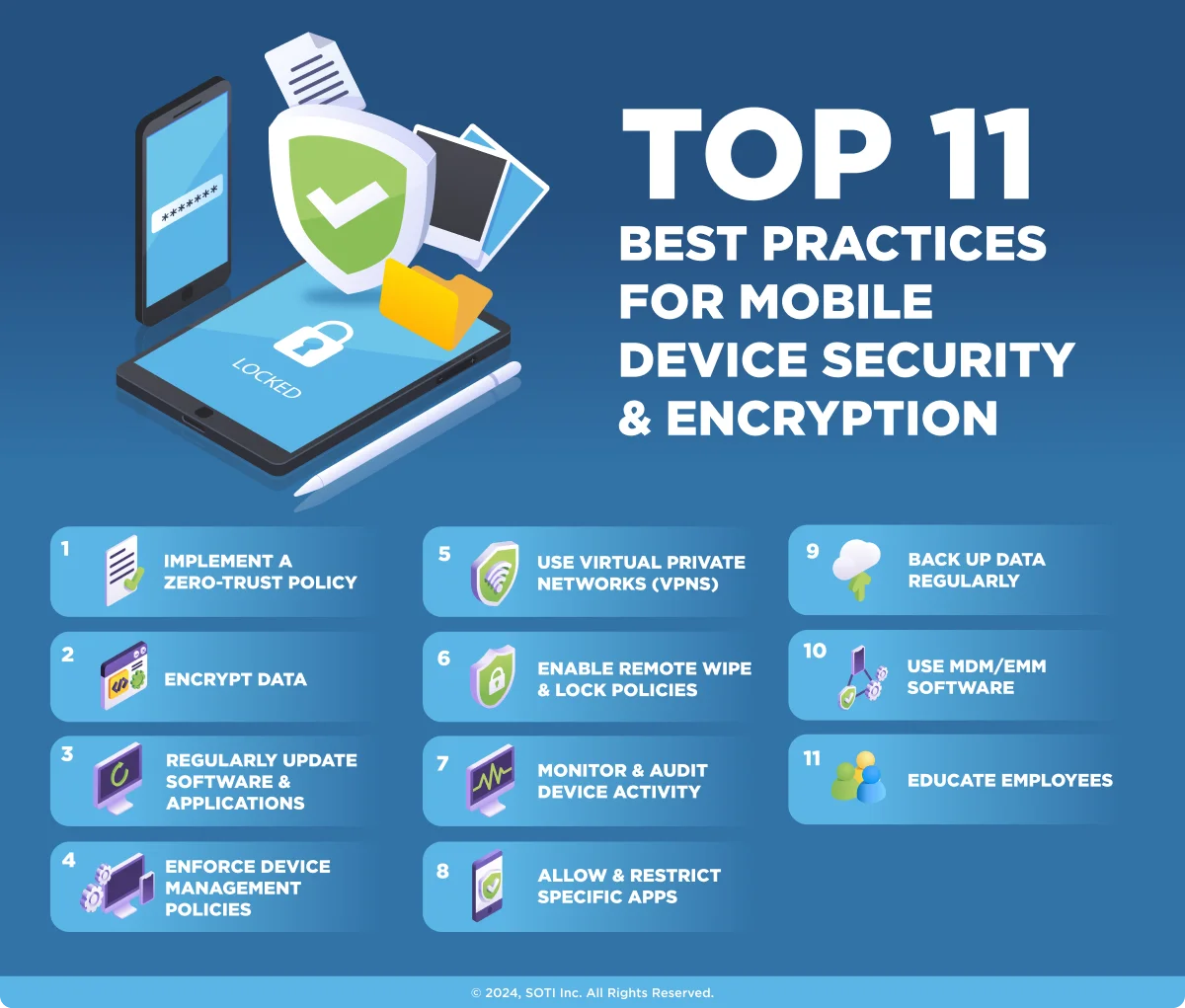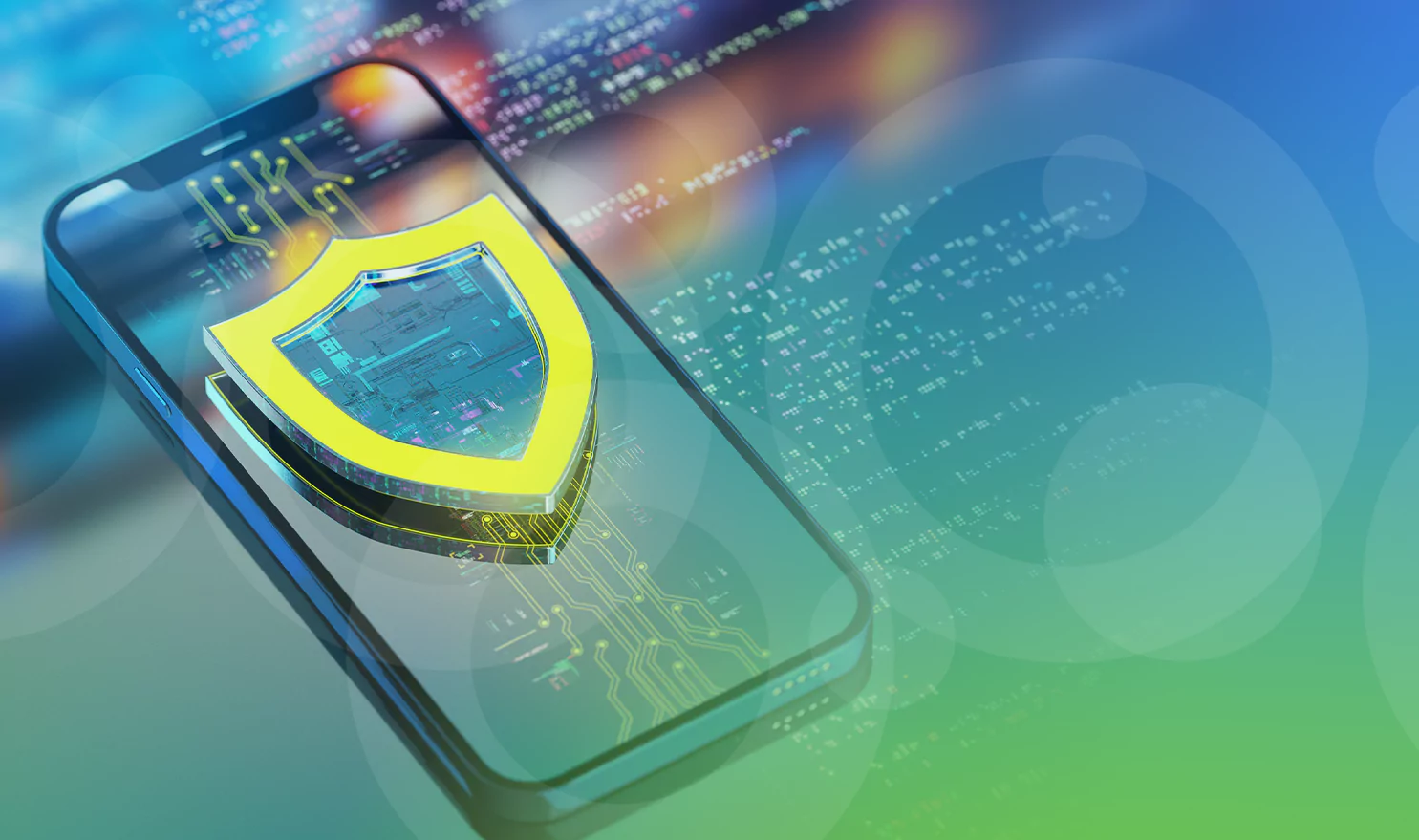Mobile Device Security and Encryption Best Practices

In today's digital landscape, mobile devices have become necessary tools for both personal and professional use. They store a wealth of sensitive information, ranging from personal emails to financial information and company data. From smartphones to tablets and rugged devices, these tools serve as gateways to large networks of information, communication and productivity.
Mobile devices are used in various environments, including public Wi-Fi networks and shared workspaces, increasing their vulnerability to cyber threats. Proper mobile device security and encryption strategies are critical to ensuring a well-rounded cybersecurity strategy.
Importance of Protecting Sensitive Data on Mobile Devices
The ability to use mobile devices anywhere in the world makes them prone to more mobile threats than other type of technology. Cyberattacks can come in many forms, including malware, ransomware, phishing and physical theft. A network or device security breach can lead to economic loss, reputational damage and legal consequences. The risk of data loss highlights the importance of implementing device best practices and encryption techniques to reduce risks of unauthorized access.
Assessing the Landscape: Understanding Mobile Device Security
Before introducing specific measures, it’s important to understand how cybersecurity and mobile devices impact a company’s operations. Businesses should identify potential security threats and assess current vulnerabilities to understand the implications of security breaches based on how employees use mobile devices. Organizations can develop custom security strategies that address unique challenges and needs by completing a risk assessment.
Mobile device security is a key area for concern in tech due to the growing number of yearly cyberattacks. The increase in concern for data security and encryption relates to a few trends.
-
As businesses try to safely use Generative Artificial Intelligence (Generative AI) software, threat actors have already created Generative-AI-powered attacks.
-
The dispersed workforce is another major trend impacting business security. Criminals have the advantage of targeting company-owned or personal devices outside secure corporate networks.
-
The growing shortage of cybersecurity professionals has also affected companies' ability to protect information. All these factors are impacting criminals’ ability to take advantage of organizations.

Essential Strategies for Mobile Device Security
A strong mobile security strategy factors in both technical vulnerabilities and human factors. It should include technical controls, security policies and user awareness programs. Deploying encryption techniques, enforcing factor authentication and implementing remote wipe capabilities to mitigate the risk of data loss are all important methods to consider.
Top 11 Best Practices for Mobile Device Security & Encryption

-
Implement a Zero-Trust Policy
-
Require users to set unique strong passwords.
-
Discourage employees from sharing passwords.
-
Encourage the use of multi-factor authentication or biometric methods.
-
Advise against clicking links from unfamiliar senders or downloading software from unfamiliar sources.
-
Avoid sharing personal information with unverified websites or individuals.
-
-
Encrypt Data
-
Encrypt data stored on mobile devices to protect against unauthorized access in case of loss or theft.
-
Use symmetric or asymmetric encryption methods for enhanced security.
-
-
Regularly Update Software & Apps
-
Keep mobile operating systems and apps up to date to patch vulnerabilities and prevent attacks.
-
Schedule routine audits to ensure regular updates on all devices.
-
-
Enforce Device Management Policies
-
Implement policies to enforce security settings, such as password protection and encryption.
-
Ensure leaders adhere to policies.
-
-
Use Virtual Private Networks (VPNs)
-
Mandate VPN usage when accessing sensitive information or connecting to public Wi-Fi networks. Public Wi-Fi networks are insecure and commonly targeted by criminals.
-
Minimize the use of public Wi-Fi for remote work.
-
-
Enable Remote Wipe & Lock Policies
-
Activate remote wipe and lock features on company-owned devices.
-
Enable IT teams to remotely erase data and prevent unauthorized access in case of theft or device loss.
-
-
Monitor and Audit Device Activity
-
Regularly monitor and audit device activity to detect suspicious behavior or unauthorized access.
-
Address vulnerabilities through proactive measures, such as vulnerability assessments and penetration testing.
-
-
Allow & Restrict Specific Apps
-
Control app installation and usage.
-
-
Back Up Data Regularly
-
Encourage regular data backups to prevent loss in case of device damage or failure.
-
Automate backups using cloud platforms for seamless data protection.
-
-
Use MDM/EMM Software
-
Employ Mobile Device Management or Enterprise Mobility Management software to manage and secure devices remotely.
-
Gain insights into business operations and enforce policies on all devices.
-
-
Educate Employees
-
Provide ongoing training on mobile device security best practices and the importance of data protection.
-
Offer background context on new policies and illustrate with real-life examples of cybercrime.
-
Encourage employee participation and behavior change through effective leadership and training initiatives.
-
Employee Advocacy: Best Practices for Mobile Device Security
In addition to technical safeguards, organizations must focus on implementing employee policy best practices for mobile device security. Educating users about the importance of security awareness can be difficult without company-wide support.
By fostering a culture of awareness and accountability, businesses can empower employees to play an active role in protecting their mobile devices and the data they contain. This process takes time. Regular audits can help identify compliance issues and ensure security measures are being maintained.
Staying Up to Date on Cybersecurity
As the threat landscape evolves, up-to-date security measures are essential to ensure the success of mobile device protection. This involves regularly reviewing and updating security policies, staying informed about emerging threats and adapting security strategies accordingly. IT managers should subscribe to mobile cybersecurity newsletters and encourage all employees to share any relevant news regarding the devices or software services they use.
Proactive Measures for Mobile Device Security
Effective mobile device security requires continuous monitoring and rapid response to security incidents. Post-incident analysis is crucial to learn and improve for the future. An Enterprise Mobility Management solution can provide important business intelligence insights to support a strong device security strategy. Organizations should follow the 11 best practices for device security and encryption to protect sensitive data, mitigate risks and safeguard against potential threats.





